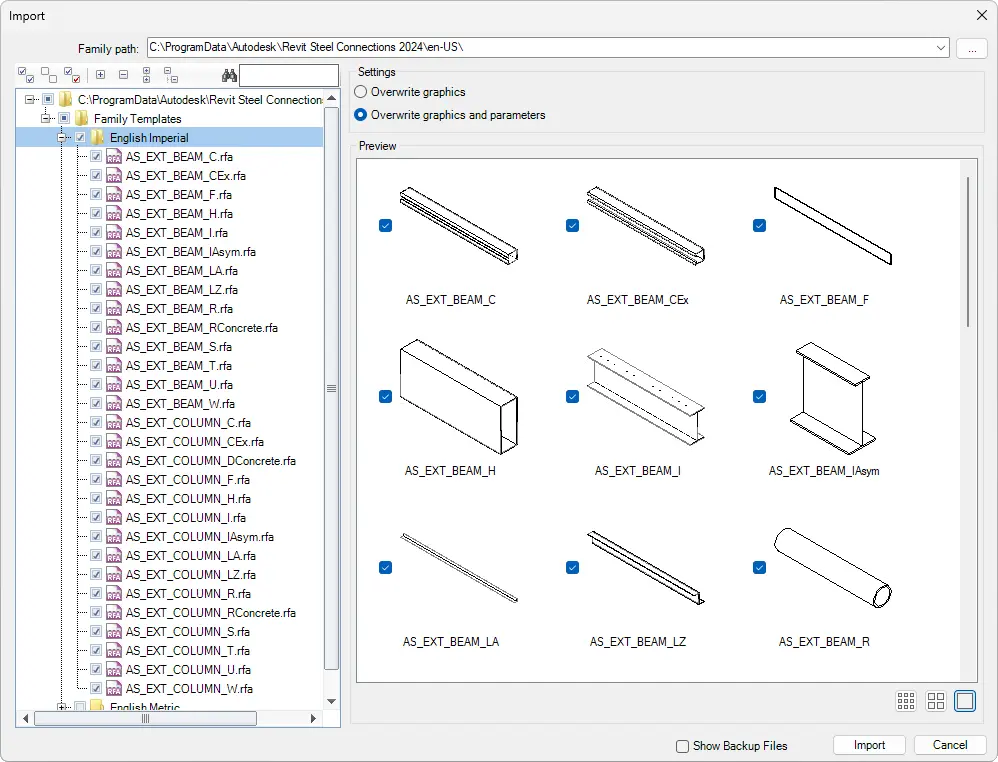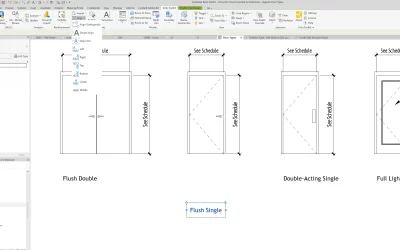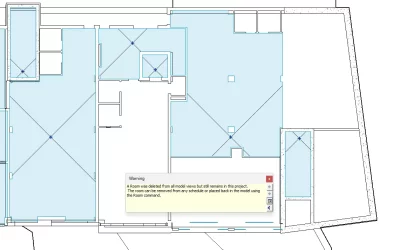There are several ways how you can transfer families from one Revit project to another.
Copy and Paste
You can copy and paste loadable families, system families, and in-place families from one project to another.
To copy the elements (Copy to Clipboard), first select the element and click on the Modify tab. In the Clipboard panel, click on the Copy icon ![]() . You can also use the keyboard shortcut CTRL + C.
. You can also use the keyboard shortcut CTRL + C.

Note: There are certain exceptions with copying to clipboard. You cannot copy an interior elevation arrow without copying its adjoined elevation symbol. It is also not possible to copy some combinations of elements (for example curtain panels and mullions cannot be copied without copying the entire curtain system).
To paste the element to another project. Open the project to which you want to paste the Family to.
The Paste tool inserts elements from the clipboard to the current view or a different view. This tool is available only after cutting or copying elements.
Note: You can only copy (or cut) and paste elements within the same session of Revit.
To Paste the Family from the Clipboard, go to the Modify tab. In the Clipboard panel, click on the Paste icon ![]() . You can also use the keyboard shortcut CTRL + V.
. You can also use the keyboard shortcut CTRL + V.
Clicking on Paste, offers several different options. You can:
- Paste from Clipboard
- Aligned to selected Levels
- Aligned to Selected Levels
- Aligned to Current View
- Aligned to Same Place
- Aligned to Picked Level

Load Into Project (For Loadable Families)
You can use Revit’s function Load into Project, which exists for loadable families.
Loadable families in Revit are standard component families – components that are usually purchased, delivered and installed in a building, for example: Doors, Windows, Furniture, Water Heaters, Plumbing Fixtures, etc.
Loadable families are user-defined and can be created and modified in Revit based on the project requirements.
Unlike System Families, the Loadable Families can be saved as external RFA files and can be loaded into projects whenever its required.
To load families into the project:
1. Open the model you want to transfer from and the model you want to transfer to.
2. Select the family you want to transfer.
3. In the Modify panel click Edit Family ![]()

4. In the Family Editor click Load into Project or Load into Project and Close.
Import and Export Families (for multiple families at once)
Another way to copy families from one project to another is to use Import and Export commands.
Import and Export functions are part of the Kobi Toolkit for Revit (download a free trial here).
Export
Using the Export command allows users to harvest all families in a project and export them into a personal library on their computer.
To access the Export command, go to Kobi Toolkit for Revit tab and in the BIM Manager panel, click on Export ![]() .
.
A new dialog box comes up. The dialog box shows all the different families that are currently in the model. Here you can define the export path (option to open a folder after export) and select the families you wish to export. Click the Export button to confirm it.

Read more about the Revit Export option from Kobi Toolkit.
Import
Import command allows you to import multiple families into the project from a specified location. Importing from multiple folders is supported within one common location.
To access the Import command, go to the Kobi Toolkit for Revit tab, and in the BIM Manager panel, click on Import ![]() .
.
A new dialog box comes up. The dialog box shows all the different families that are currently in the specified folder. You can change the import folder – Family path. In the Settings section, you can choose to Overwrite graphics or Overwrite graphics and parameters. The preview section offers a preview of all the families inside a certain folder. Select the families you wish to import and click on Import.

Read more about the Revit Import option from Kobi Toolkit.
Transfer Project Standards (for System Families)
For system families, you can also use Revit’s Transfer Project Standards command.
System families in Revit contain family types of basic building elements (floors, walls, ceilings, and stairs). They are already predefined in Revit and saved in templates and projects, not loaded from external files. You cannot create, copy, modify, or delete system families, but you can duplicate (copy) and modify the types within system families to create your own custom system family types. When deleting system family types, you can delete all but one, because you need at least one type per family to create new system family types.
Even though system families cannot be loaded into templates and projects, you can copy and paste or transfer system family types between projects and templates. You can copy and paste any number of individual types, or use a tool to transfer all types in the system families that you specify.
System families can also host other kinds of families, usually loadable families (a wall system family may host a standard door/window assembly). Watch the video below to learn how to Transfer project Standards with Kobi Toolkit (Schedules, Legends, View Templates, Details, and Materials) from one Revit project to another.
Copy Standards – Kobi Toolkit for Revit
Copy Standards allows you to select Revit Views, View Templates and Materials you want to copy from source (the file you run tool from) to target file.
Related topics:
- How to Transfer Project Standards in Revit
- How To Export Shared Parameters in Revit
- Reload Revit Families
Try Kobi Toolkit for free and download a free trial!



